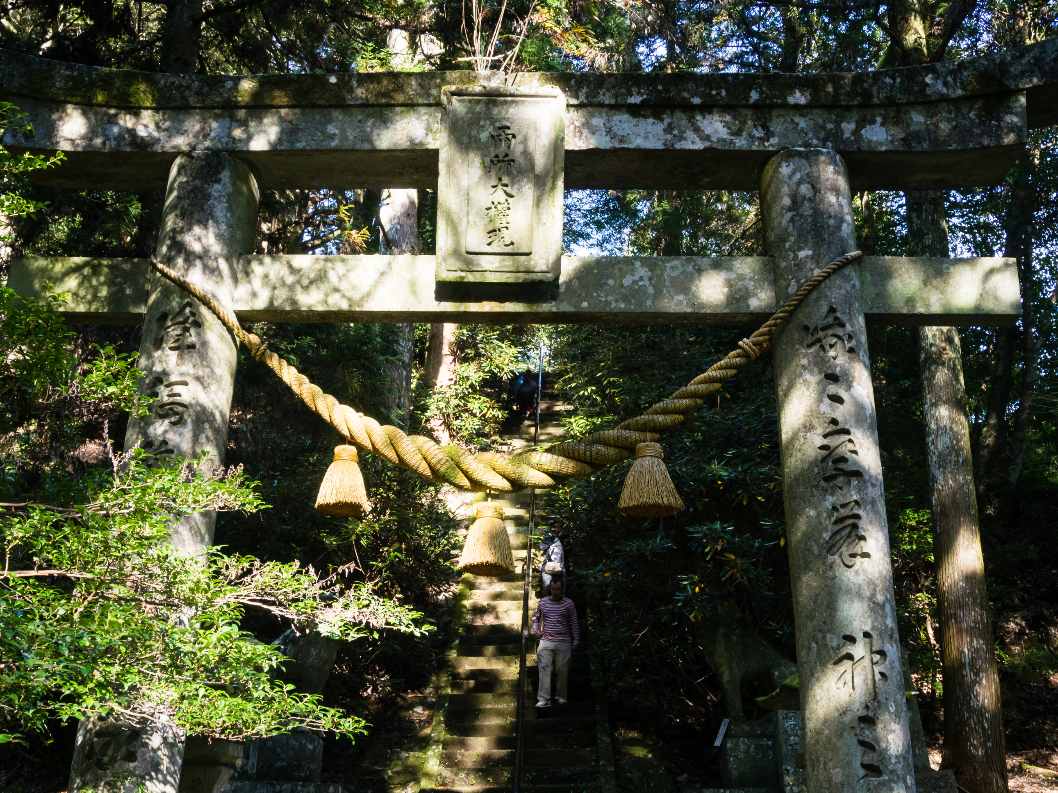
Rokugo Manzan – The Unique Pride and Joy Of Kyushu
Rokugo Manzan (六郷満山) is certainly a term that is deemed a jargon by many, including Japanese themselves. Even myself admittedly have never heard of it until only recently, despite having visited the region a decade ago. Nevertheless, it fascinates me as I studied about it further, that this culture is one that established the foundation for Buddhism in the island of Kyushu.
For starters, Rokugo Manzan (六郷満山) refers to the synchronism of various religious beliefs which later evolved into a culture and established itself in the Kunisaki Peninsula (国東半島) region of Oita Prefecture (大分県). In fact, the region became renowned for its scenic mountain temples, and also the grand Usa Jingu (宇佐神宮) shrine. With all that said, read on to learn more about this fascinating culture.
Save In Pinterest
No time to read the history of Rokugo Manzan now? Click on the save button and pin it for later!
Table of Contents
The Term Rokugo Manzan
Firstly, lets look at the characters of Rokugo Manzan. The kanji (漢字) or Chinese character for Rokugo Manzan is 六郷満山 (pronounced Roukugo Manzan/Rokugō Manzan or ろくごうまんざん in hiragana). Next, we breakdown each characters meaning as below:
- 六 (Roku) – six (as in number six itself)
- 郷 (Go) – village, township or district
- 満 (Man) – full
- 山 (Zan) – mountain
- Based on the above, the term itself means ‘Six Districts, Full of Mountains’.
To further elaborate, the region was formerly a volcanic region, with volcanic activities shaped up the landscape to form various mountains. Also, back in the old days until the Nara period, the region used to have six districts which are 武蔵/Musashi, 来縄/Kunawa, 田染/Tashibu, 安岐/Aki, 伊美/Imi, 国東/Kunisaki.
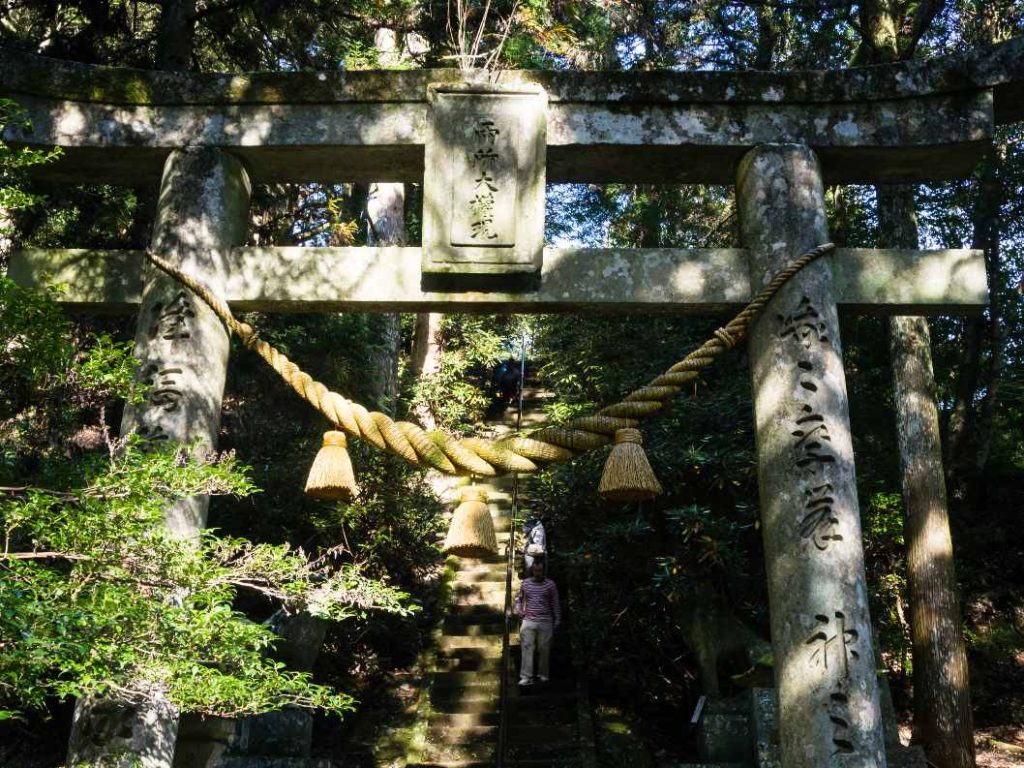
How It Originated
The origin of Rokugo Manzan started back 1,300 years ago by a legendary monk named Ninmon (仁聞) who came from Usa Jingu (宇佐神宮). As part of his religious training, he went on a journey across the mountains of the peninsula in search of enlightenment. He eventually fell in love with the beauty of the region, just like love at first sight and saw the spirituality potential in it.
Subsequently, he established 28 temples and even built around 69,000 Buddha statues, including some really large ones across the region. The first temple that he founded is the Sentoji (千燈寺); presently a ruin site with an amazing and also hidden fall foliage spot on its own right. Also similarly to Usa Jingu, many of these temples incorporate both Buddhism and Shintoism styles into their design. This assimilation eventually became the core foundation of Rokugo Manzan, known as Shinbutsu Shugo (神仏習合).
Sooner than later, he also gained his own followings, whom continued his legacy even after his death. His followers continued on his spiritual practice called Mineiri (峰入り); combining elements from Buddhism and Shintoism together with mountain worship. To learn more about Mineiri, check out the next section below.
- 神 (Shin) – god/deity; can also be pronounced as kami on its own (referring to Shinto deities)
- 仏 (Butsu) – the Buddha, can also be pronounced as hotoke on its own (referring to Buddhism)
- 習 (Shū) – to learn
- 合 (Gō) – to fit in
- In summary, the assimilation of Shintoism and Buddhism.
The Practice of Rokugo Manzan - Mineiri
Mineiri (峰入り) refers to the ascetic practice of the Rokugo Manzan followers. It has been practised and embodied among monks and locals of the Kunisaki Peninsula for centuries. It combines different elements from various religions and beliefs, such as sutra recital and meditation from Buddhism, the worship of the guardian deities of mother nature from Shintoism and also mountain worship. Mine (峰) means hill while iri (入り) means entering, translating to ‘entering the mountains’. Practitioners of the mineiri go on an arduous 4-days pilgrimage across the peninsula, covering the footsteps of their founder, Ninmon (whom they believed is a reincarnation of Hachiman (八幡), the Shinto God of War).
Furthermore, throughout their pilgrimage, they will trail across rugged mountains and ridges, jumping between enormous rocks and crossing deep ravines. These monks will try to trek through the arduous path as fast as possible in hopes of obtaining supernatural powers, making obstacle courses look like child’s play in comparison. They will also give blessings to people they meet along the way while staying inside caves at night, placing Buddha statues next to them and pray.
To spot them, simply look out for monks wearing an entirely white outfit, holding a ringed pewter staff. The white colour for their outfit represents purity physically and spiritually, an element heavily emphasized in Shintoism. The ringed staff (shakujo/錫杖) they carry on the other hand is from Buddhism, and serves to announce their presence by jingling it. One can certainly witness the assimilation of both religions just by their outfit alone.
The Expansion of Rokugo Manzan
As the religion gained popularity over the region, so too were the number of temples and establishments. The most prominent of them all being the grand Usa Jingu shrine; featuring the Hachiman-zukuri (八幡作り) architecture style. It is a style that features a combination of Buddhism and Shintoism elements, with the shrine being one of the last surviving examples of it. The shrine’s deity of worship, Hachiman (八幡), even got promoted to a Boddhisatva/Buddhist deity as a result from the assimilation between both religions.
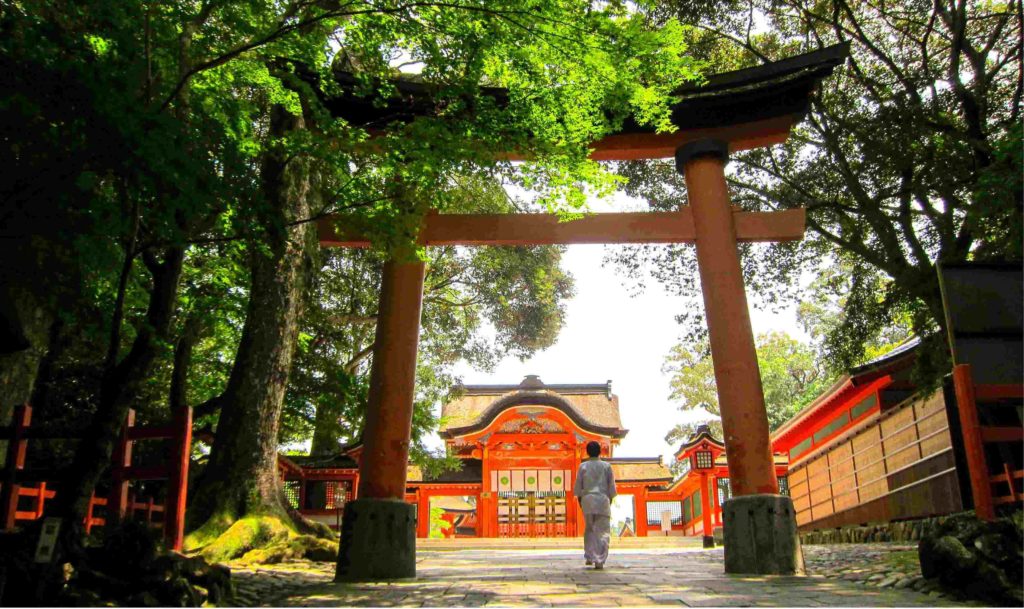
The expansion furthermore lead to the construction of mountain temples. One of the most prominent temples is the Futagoji (両子寺). Built in AD 718 by none other than Ninmon himself, it is located at the foot of Mt Futago (両子山) and is known for its pair of giant Nioh (仁王) statues. The increase of temples also resulted in the monks created a school system for the religion itself (see below for more info).
Also, the soft nature of the volcanic rocks in the region lead to the construction of large Buddha statues, especially during the Heian (平安時代) and the Kamakura (鎌倉時代) periods. In particular, the Kumano Magaibutsu (熊野磨崖仏) features two giant Buddha statues that are considered a rare treasure in Japan. Notably these two periods were the only times when giant Buddha statues became a trend in Japan.
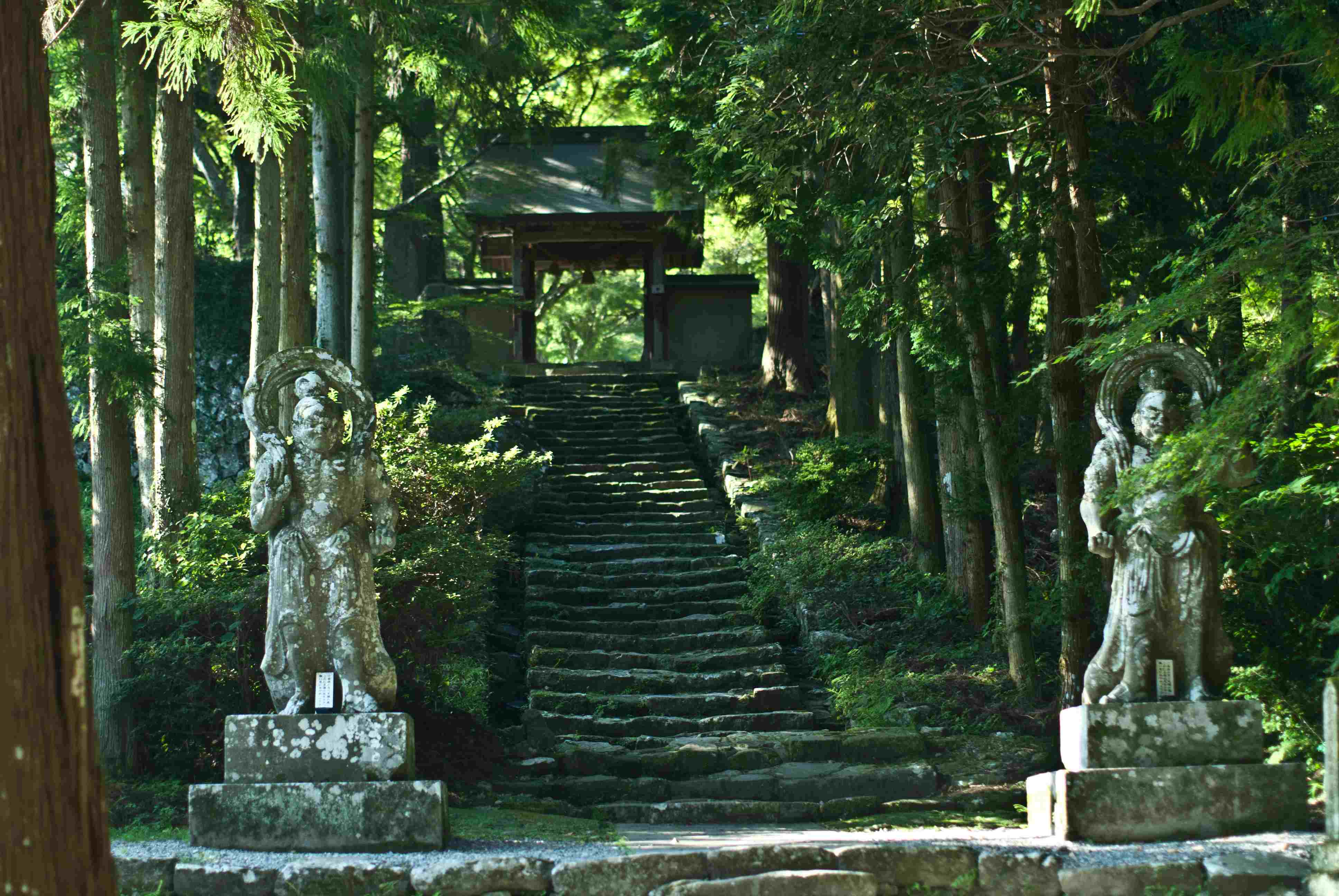
Organisation of the Rokugo Manzan Temples
Did you know that the monks organised Rokugo Manzan temples in the Kunisaki Peninsula into a system based on their roles? In fact, these temples were divided into three groups which are:
1. The main temples (Motoyama/本山): The ones that are in charge of the monks’ education, sermons, rituals and the overall organisation.
2. The central temples (Nakayama/中山): Focuses on training and administering mountain ascetic practices (yamabushi/山伏); i.e. organising mountain retreats for the monks to connect with mother nature.
3. The lower temples (Sueyama/末山): Focuses on the monks’ living arrangements and the early stages of their training.
It is amazing to think how these monks have thought of an education system which allows the religion to nurture not just followers, but also allowed it to survive for centuries.
Interested in learning more about the background of these attractions? Then, be sure to subscribe to this blog as I will cover in further detail in the future.
The Suppression of Rokugo Manzan
Despite its popularity in the region, it’s influence was suppressed heavily at one point of time. During the 18th century Meiji period (明治時代), the government was on an industrialisation craze to catch up with the West. And in order to do so, they decided to instill a strong sense of nationalism among their citizens. As a result, the government nationalised Shinto as the main religion and enacted a decree called Shinbutsu Bunri (神仏分離).This decree involved the removal of Buddhist figures and ornaments to be removed from shrines and temples being demolished.
- 神 (Shin) – god/deity; refers to Shinto deities
- 仏 (Butsu) – the Buddha, refers to Buddhism
- 分 (Bun) – part/section
- 離 (Ri) – to separate
- In summary, the term defines as ‘the separation of Shintoism and Buddhism’.
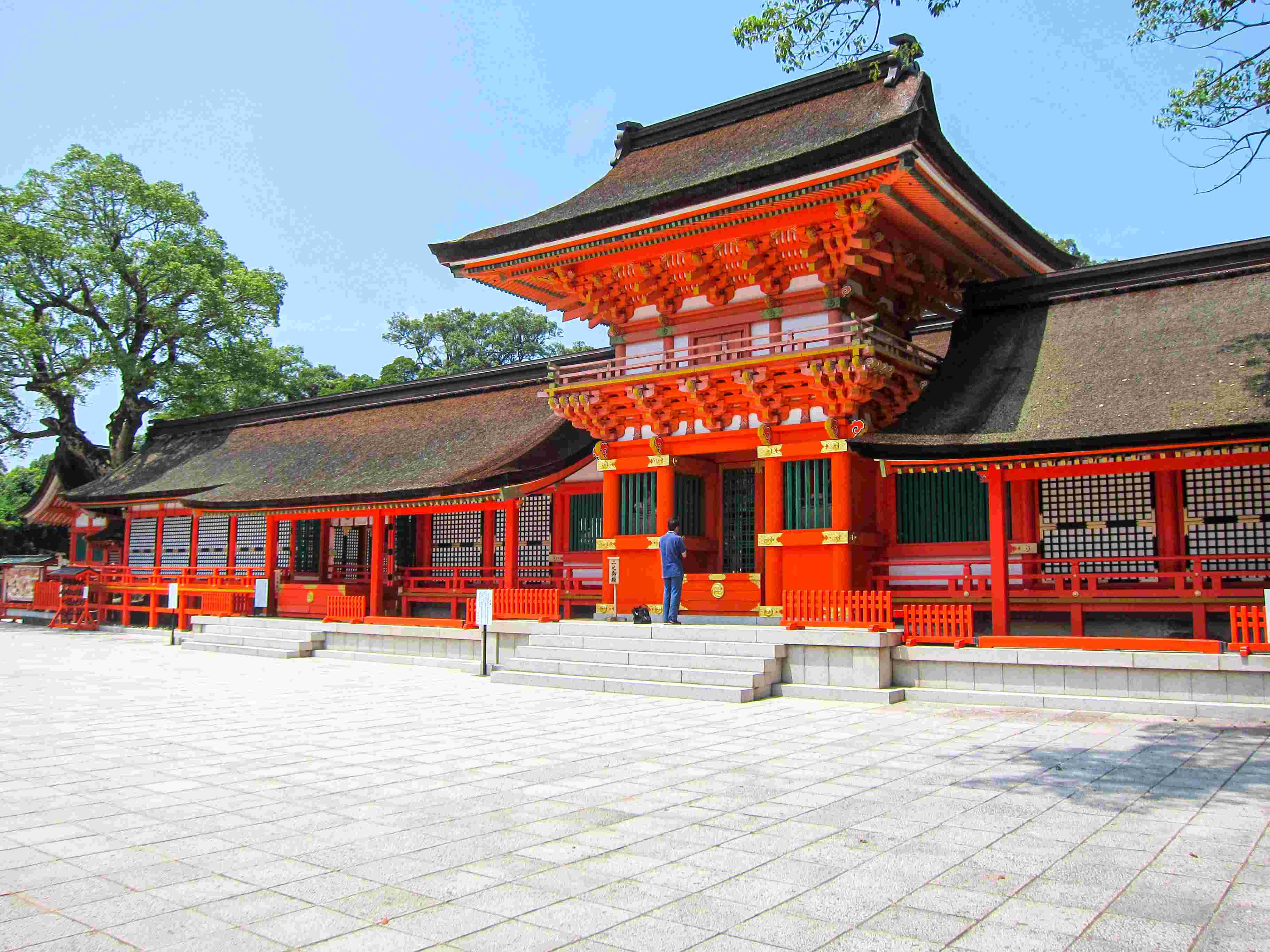
Subsequently, Buddha statues and bells were confiscated and smelted to make canons, sutras were burnt and monks were forced to retire or join the Shinto side. This region was no exception; with the demolition of temples, and even including Usa Jingu shrine. Eventually, the government realised the decree failed, mainly because people still needed funerals, graves and ancestral ceremonies. And while it ended, it however changed the status quo between Shintoism and Buddhism. Both religions are considered independent of each other, and the once popular idea of religious assimilation faded into obscurity.
Rokugo Manzan Today
Fortunately, some temples within the peninsula survived the ordeal and so to the practice of Rokugo Manzan. Today, many attractions that preserved the Rokugo Manzan culture are the rustic hidden mountain temples throughout the peninsula. This also includes the grand Usa Jingu shrine, which maintains its unique Hachiman-zukuri (八幡作り) architecture style.
In the next article, I will cover details of these scenic attractions which preserved the rare Rokugo Manzan culture. Stay tune, and also, be sure to subscribe so you do not miss out on future news about the hidden gems of Japan.
Loving the content here?
Subscribe and get your free hidden gems in Japan bucket list here.


You May Also Like
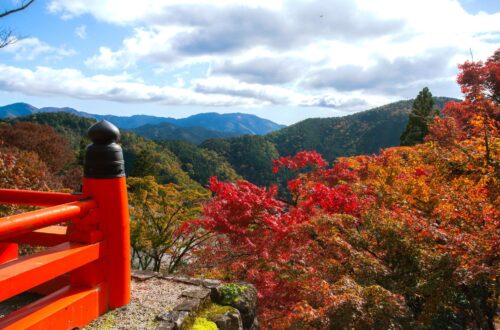
Kurama-dera Temple – The Ultimate Travel Guide
March 30, 2024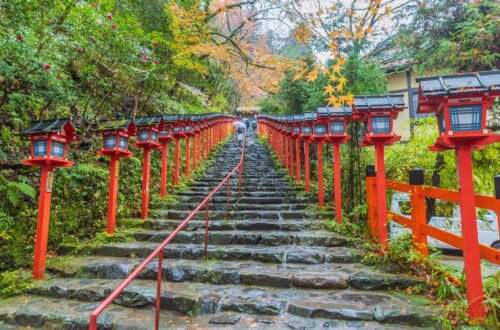
Kifune Shrine – A Complete Guide to Kyoto’s Mystical Shrine
July 19, 2024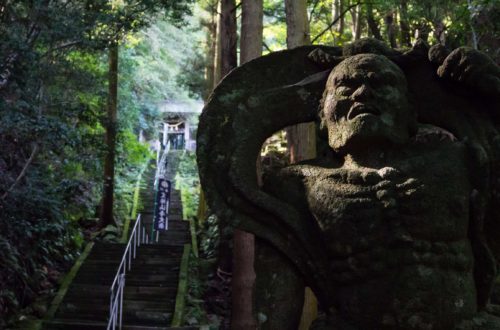
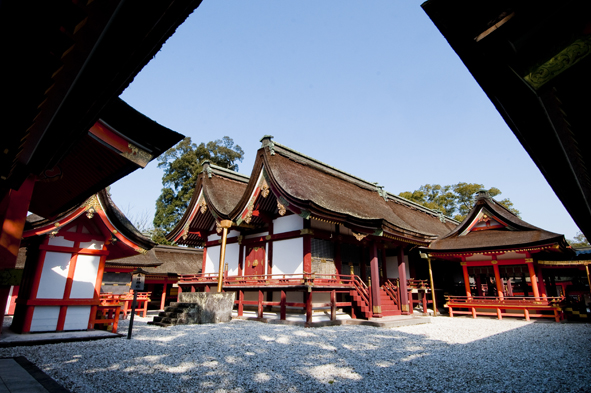
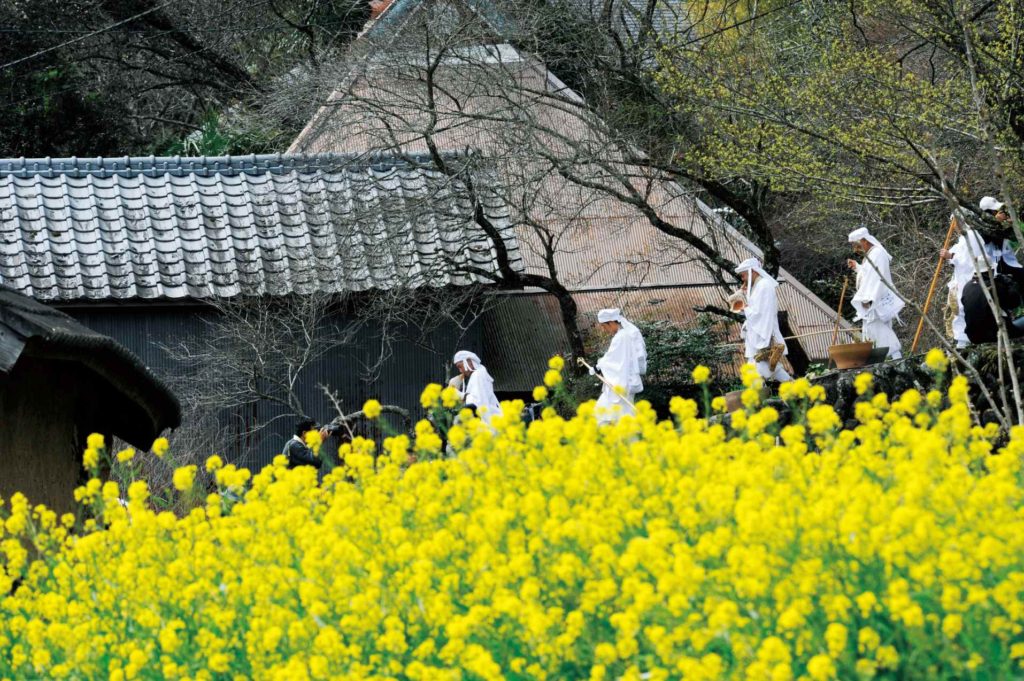
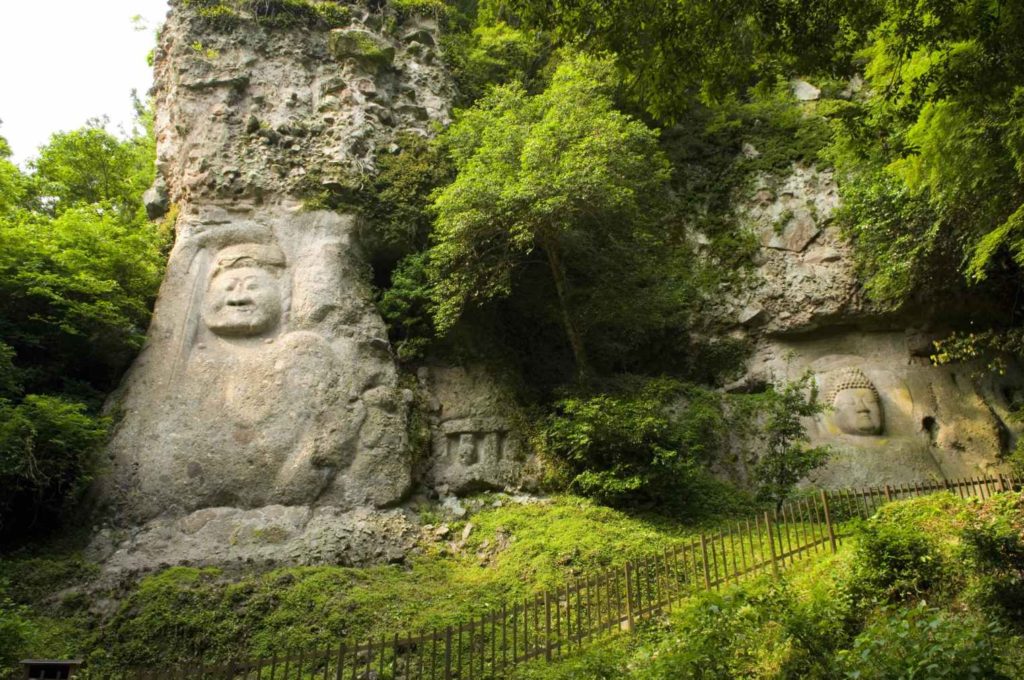
2 Comments
May
How do I get there from beppu station
Yentravelsjapan
Hi May, thanks for your question. There are a few ways to explore the region from Beppu:
1. Rent a car from Beppu and drive around the area (easiest method as it offers the most flexibility)
2. Take a Oita Kanko Bus from Beppu for a daytrip (Link).
3. Visit the Kunisaki Tourism Info Center as I have heard they do offer tours to the region, though it is best to inquire with them directly for more info (Link)
Hope that helps!